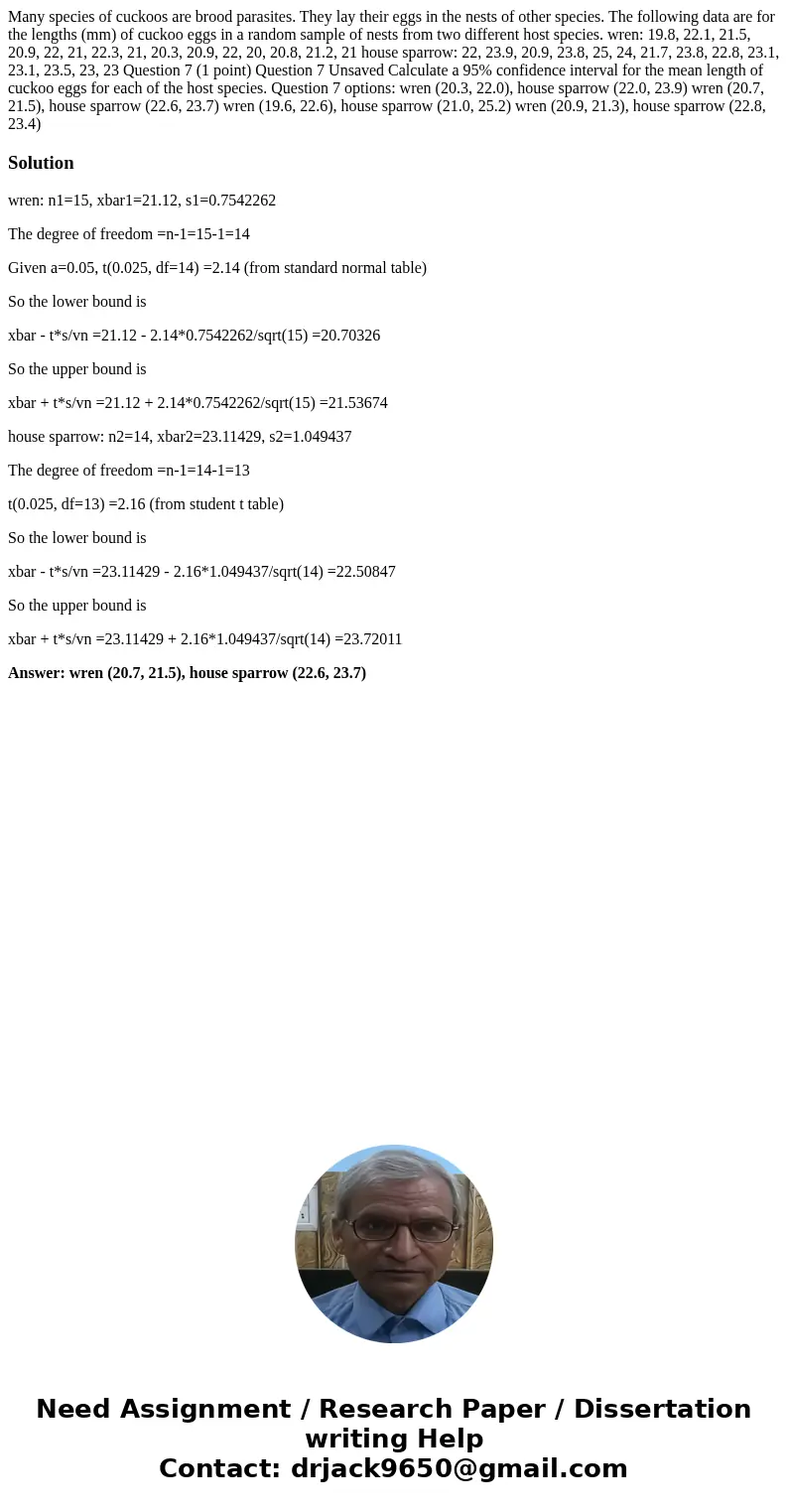Many species of cuckoos are brood parasites They lay their e
Many species of cuckoos are brood parasites. They lay their eggs in the nests of other species. The following data are for the lengths (mm) of cuckoo eggs in a random sample of nests from two different host species. wren: 19.8, 22.1, 21.5, 20.9, 22, 21, 22.3, 21, 20.3, 20.9, 22, 20, 20.8, 21.2, 21 house sparrow: 22, 23.9, 20.9, 23.8, 25, 24, 21.7, 23.8, 22.8, 23.1, 23.1, 23.5, 23, 23 Question 7 (1 point) Question 7 Unsaved Calculate a 95% confidence interval for the mean length of cuckoo eggs for each of the host species. Question 7 options: wren (20.3, 22.0), house sparrow (22.0, 23.9) wren (20.7, 21.5), house sparrow (22.6, 23.7) wren (19.6, 22.6), house sparrow (21.0, 25.2) wren (20.9, 21.3), house sparrow (22.8, 23.4)
Solution
wren: n1=15, xbar1=21.12, s1=0.7542262
The degree of freedom =n-1=15-1=14
Given a=0.05, t(0.025, df=14) =2.14 (from standard normal table)
So the lower bound is
xbar - t*s/vn =21.12 - 2.14*0.7542262/sqrt(15) =20.70326
So the upper bound is
xbar + t*s/vn =21.12 + 2.14*0.7542262/sqrt(15) =21.53674
house sparrow: n2=14, xbar2=23.11429, s2=1.049437
The degree of freedom =n-1=14-1=13
t(0.025, df=13) =2.16 (from student t table)
So the lower bound is
xbar - t*s/vn =23.11429 - 2.16*1.049437/sqrt(14) =22.50847
So the upper bound is
xbar + t*s/vn =23.11429 + 2.16*1.049437/sqrt(14) =23.72011
Answer: wren (20.7, 21.5), house sparrow (22.6, 23.7)

 Homework Sourse
Homework Sourse